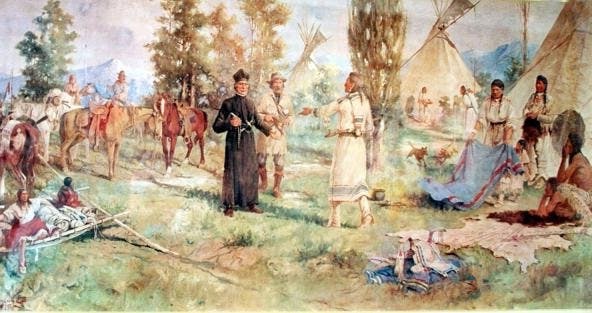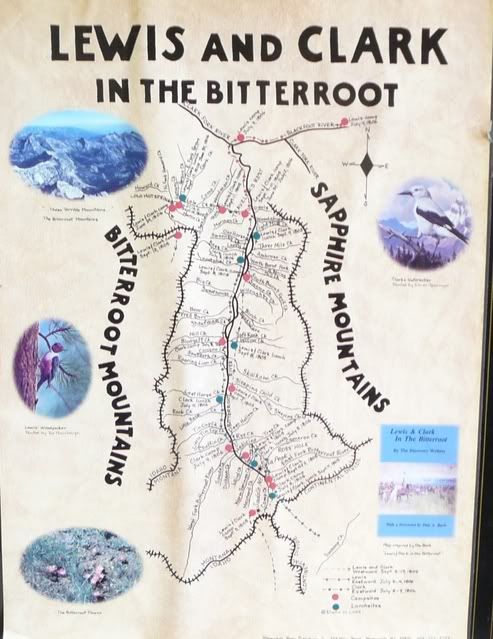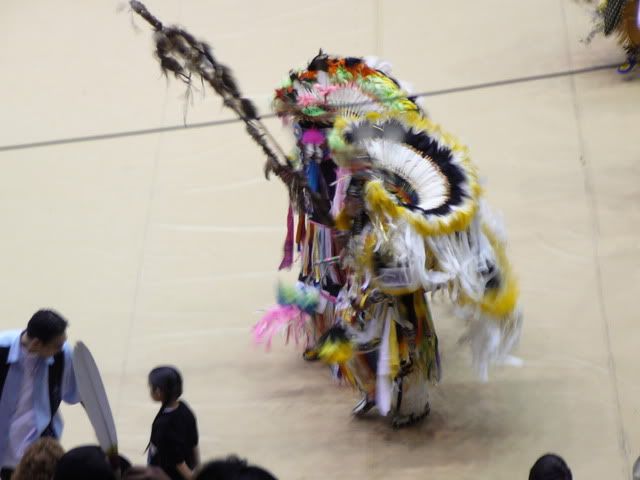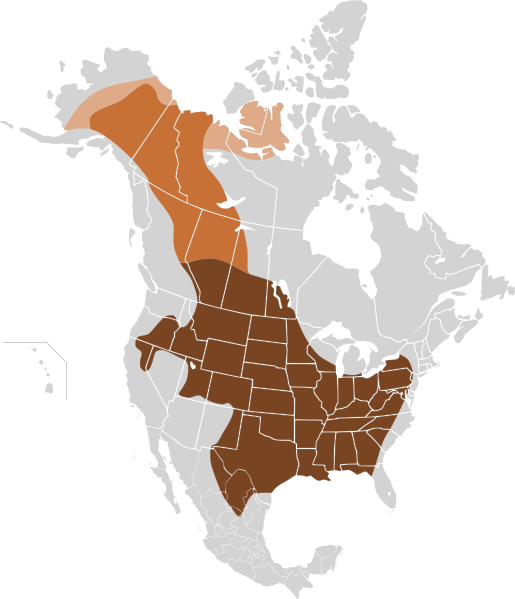
During the 1830s, a major stir occurred among the missionary groups in North America when there were reports of the “savage” tribes from the interior who had come to St. Louis seeking Christianity. One of these tribes was the Flathead or Bitterroot Salish, a Salish-speaking tribe whose traditional territory included much of Western Montana. After they acquired the horse during the early 1700s, they began going east of the Rocky Mountains to hunt buffalo.
During the 1800s, the buffalo hunting area east of the Rocky Mountains on the Great Plains was claimed by a number of different tribes and there were often battles between them. The animosity between the Flathead and the Blackfoot was particularly intense and Blackfoot warriors were often successful in their raids on Flathead hunting parties.
In 1810, the North West Company established a trading post called Saleesh House in Flathead country on the Clark Fork River near present-day Thompson Falls in Montana. Fur trader David Thompson employed six Iroquois at Saleesh House to help him find bark for making canoes.
Following the establishment of Saleesh House, Nor’wester fur traders accompanied a hunting party of 150 Flathead across the Rocky Mountains through Marias Pass to hunt buffalo on the Plains. The hunting party was attacked by a party of 170 Piegan Blackfoot. The Flatheads won the battle, in part through the aid of the three traders who were traveling with them. The Flathead were armed with 20 guns obtained from the Nor’westers. They killed 7 of the Blackfoot and wounded 13 others. Among the Flathead, 5 were killed and 9 wounded. This was the first time in many years that the Flathead had won a battle against the Blackfoot.
The following year, the North West Company trading post Saleesh House was abandoned because of Blackfoot raids against the Flathead and fear of reprisals for the Nor’westers’ role in the battle against the Blackfoot.
In 1820, a group of about two dozen Christian Iroquois (Catholic Mohawk from Quebec) under the leadership of Old Ignace La Mousse came to live among the Flathead. The Iroquois worked for the Canadian fur traders and were to help establish fur trade and to show the Flathead how to trap.
The Iroquois preached their version of Christianity to the Flathead and taught them a number of Christian prayers and hymns. They told the Flathead about the great power of the Black Robes – the Jesuit Priests of the Catholic Church.
In 1831, some of the Flathead decided that the power of the Black Robes (Jesuits) could help them prevail over their enemies. The American Fur Company transported four Indians, including Silver Eagle and Running Bear, to St. Louis where they met with William Clark. Clark, of Lewis and Clark fame, had first made contact with the tribe when the Corps of Discovery had passed through their territory. While Clark was sympathetic to their request for missionaries, he was unable to find any Black Robes who were free to go to western Montana.
Two of the Flathead men died in St. Louis. The other two traveled part of the way home with the well-known American artist George Catlin who later reported that the Flathead had told him that the Jesuits had a superior religion and that they would be lost if they did not embrace it. The two remaining Flathead men died before returning home.
In 1834, Jason Lee, sent by the Methodist Missionary Board to establish a mission among the Flathead, met with the Flathead and Nez Perce at the Green River Rendezvous in Wyoming. He found the Indians deeply unsettling and concluded that the Indians were slaves to Satan and to alcohol. Instead of establishing an Indian mission, he continued his journey west to Fort Vancouver in Washington.
In 1835, the Flathead still felt it would be good if they were to have a Black Robe live among them and share with them the great power of the Black Robes. Consequently, a second delegation of Flathead left Western Montana to travel to St. Louis, Missouri. The journey from Western Montana to Missouri was not an easy one for it meant that they had to pass through territories claimed by other tribes, such as the Crow and Lakota. Even though they were on a peaceful mission, it was easy to be mistaken for a war party and to invite attack by other tribes.
In St. Louis they asked for a Black Robe to be assigned to them. The delegation included Old Ignace, the Iroquois who first introduced the Flatheads to Catholicism. Historian Larry Cebula, in his book Plateau Indians and the Quest for Spiritual Power, 1700-1850, reports of Ignace:
“He was familiar with Catholicism and went straight to the cathedral to have his sons baptized. There he told the blackrobes that the Flatheads had sent him to St. Louis to request missionaries and that other Plateau groups, including the Spokans, Nez Perces, Cayuses, and Kutenais, wanted missionaries as well.”
In spite of the request, all available Jesuit manpower was committed to establishing a mission among the Kickapoos on the southern Plains and therefore there was no one available to be assigned to the Flathead.
In 1836, a party of four Flatheads left their Western Montana home for St. Louis to ask for the Blackrobes (Jesuits) to come to their people. This delegation was also lead by the Iroquois Old Ignace. The group was not heard from again. Indian agent Peter Ronan, in his 1890 book History of the Flathead Indians, reports:
“Whether killed while passing through the roaming places of their enemies or died of sickness or fatigue on their wearisome journey has never been known.”
In 1839, a fourth delegation of Flathead, including Peter Gaucher and Young Ignace, left Western Montana to journey to St. Louis. Upon reaching St. Louis, they met with Bishop Rosati. In their meeting with Bishop Rosati they extracted the promise that a priest would be sent to live with them.
In 1840 the Jesuits sent Father Pierre-Jean De Smet to live among the tribes of Western Montana. His first contact with them was at the Three Forks of the Missouri River where he was welcomed into a camp of Flathead and Pend d’Oreille. In his M.A. Thesis Religious Acculturation of the Flathead Indians, Richard Forbis reports:
“Like the Catholics of medieval Europe, De Smet wanted to make all aspects of life subservient to the Church and to Christianity.”
As a part of this assimilation, he wanted the Indians to become farmers.
Upon his arrival in Western Montana’s Bitterroot Valley in 1841, Father De Smet set about constructing St. Mary’s mission, baptizing children, and instructing the people in the ways of Catholic Christianity. He placed a large hand-hewn cross in the center of a circle. According to J. F. McAlear, in the book The Fabulous Flathead: The Story of the Development of Montana’s Flathead Indian Reservation:
“Following a short service by Father DeSmet, all the Indians, young and old, came forward and solemnly kissed the cross and declared an oath that they would never forsake the religion of the Black Gown.”
At least this was DeSmet’s interpretation of what happened. According to Indian agent Peter Ronan:
“On the 3d day of December, 1841, about one-third of the Flathead tribe were baptized into the Catholic faith, and the others who were under religious instructions were received into the fold on Christmas day of that same year.”
In his book Charlo’s People: The Flathead Tribe, Adolf Hungry Wolf reports:
“But after all their efforts to learn about the Catholic religion, the Flatheads were soon discouraged by the attitudes of the priests. The People wanted to add Catholicism to their own Ways of Life—not to exchange their Ways for the ways that the priests demanded.”
In 1846, the Small Robes band of Blackfoot were living among the Flathead and observed their great victory over the Crow. The Blackfoot felt that the reason for the victory was the great War Medicine of the Blackrobes (Jesuits). Consequently, they had Father De Smet baptize 80 of their children. Encouraged by this baptism, Father De Smet set out to find the main band of the Blackfoot so that he might: (1) establish peace between the Flathead and the Blackfoot, and (2) establish a permanent mission among the Blackfoot.
In a letter to a London supporter, Father De Smet described the Blackfoot:
“They are the most treacherous and wily set of savages among all the nations of the American desert, in whose words no reliance can be placed.”
By seeking to bring Christianity to the Blackfoot De Smet angered the Flatheads. According to Richard Forbis:
“Although De Smet had lived with the Flatheads for five years, he apparently did not appreciate the fact that the Indians were not particularly interested in the moral and non-material aspects of Christianity; they were primarily concerned with its protective powers.”
When the Flathead had become Christian they had become successful in repelling Blackfoot attacks. This success, according to the Flathead, was due to the superior power of the Black Robes and if this power were to be given to their enemies, they reasoned, they might be exterminated. De Smet’s promiscuous proselytizing – giving the power to their enemies – caused Flathead resentment and hostility toward the priests and toward Christianity.
When DeSmet returned to the Flathead he found that their attitude toward the Black Robes had changed. Now they openly challenged the Black Robes by publically gambling, an activity which the priests discouraged. According to historian Larry Cebula:
“One Flathead disrupted religious services and others practiced shamanism within the mission itself.”
In 1847, smallpox struck the Flathead shortly after the hunters left for the buffalo hunt. Eighty-six people died, leaving only fifteen children alive. In her M.A. Thesis Bighorn Sheep and the Salish World View: A Cultural Approach to the Landscape, Marcia Pablo Cross reports:
“The priests regard this as a sign of God’s displeasure with the Flatheads for so many of them turning away from the mission. The Salish could have viewed this incident as the priests withholding their good medicine.”
In 1850, the Jesuits closed their mission to the Flathead and sold the mission to a local trader. The trader turned it into Fort Owen which served as a trading post for the Bitterroot Valley. The Jesuits abandoned the mission because they had little protection from Blackfoot attacks. Indian agent Peter Ronan blamed the lack of Flathead protection for the mission on the traders:
“Those men—licentious, immoral and impure generally, who accept from the great fur companies of the west, situations as trappers, hunters, etc., lead wild and desolate lives, and in their career of debauchery among the simple natives, brooked no opposition, and looked with jealous eyes upon the missionaries’ teachings of Christianity and virtue, and in the councils of the Indians began to sow the seed of discontent against the missionaries for the new order of things, which deprived the Christianized Indian from as many wives as he chose to take and in prohibiting debauchery of the Indian women by those lewd camp followers.”
It should be pointed out that Ronan had been appointed Indian Agent for the Flathead Reservation by the Catholic Church under the U.S. government policy of requiring Indians to convert to Christianity.
In 1854, the Jesuits established St. Ignatius as a mission among the Pend d’Oreille, a Salish-speaking group north of the Flathead. The Jesuits hoped that this mission would encourage the Flathead to abandon their traditional home in the Bitterroot Valley and move north to resettle among the Salish-speaking Pend d’Oreille. The Jesuits were led to the site of the new mission by Chief Alexander.
Today many, if not most, of the Flathead are Catholic and participate in Catholic ceremonies. At the same time, many also practice some of the “old ways” and see no conflict between the two. Christianity provides them with additional power.




Leave a Reply